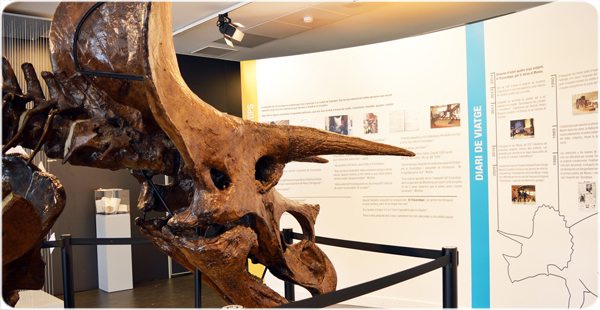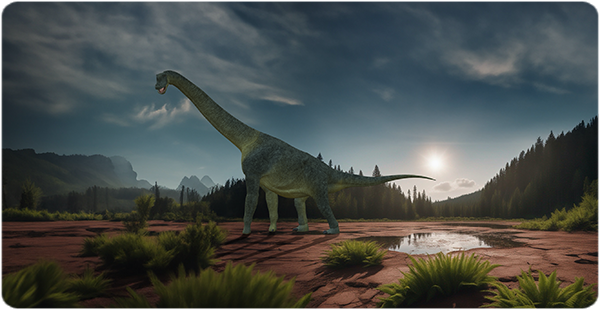An international research team has described a new sauropod dinosaur that lived on the Iberian Peninsula 122 million years ago. The new dinosaur species, named Garumbatitan morellensis, has been described based on fossils found in Morella (Castelló), thus expanding our knowledge of the diversity of dinosaurs in one of the best-preserved fossil records of the Early Cretaceous in Europe.

Un nou estudi dirigit per Albert Prieto-Márquez, investigador de 'Ramón y Cajal' de l'Institut Català de Paleontologia Miquel Crusafont (ICP) analitza com va evolucionar aquesta icònica estructura anatòmica dels ceratopsians (el grup que inclou el famós Triceratops) durant els 65 milions d’anys d’existència d’aquests animals. La investigació s'ha publicat a la revista Ecology and Evolution.

A new study led by Albert Prieto-Marquez, ‘Ramón y Cajal’ researcher at the Institut Català de Paleontologia Miquel Crusafont (ICP) sheds light on how the iconic frill of the ceratopsians (a group that includes the well-known three-horned Triceratops) evolved through the 65 million years of existence of these animals. The research has been published in Ecology and Evolution.

El nou gènere i espècie Aquilarhinus palimentus és un dinosaure de bec d'ànec que va viure fa uns 80 milions d'anys. El seu nom científic fa referència al seu nas aquilí i a la seva mandíbula ampla, formada per dues paletes paral·leles. El crani que ha permès la descripció de l'espècie és molt complet i es va trobar al Big Bend National Park (Texas, EUA) als anys 80. La investigació ha estat publicada al Journal of Systematic Palaeontology.

The new genus and species Aquilarhinus palimentus, or ‘shovel-chinned eagle nose’, is a primitive duck-billed dinosaur that lived 80 million years ago. This dinosaur has been named for its aquiline nose and wide lower jaw, shaped like two trowels laid side by side. The skull is very complete and was found in the Big Bend National Park (Texas, US) in the 80s. The research has been published in the Journal of Systematic Palaeontology.

The Basturs Poble site (Pallars Jussà, Lleida) is the most important site in Europe when it comes to hadrosaur remains. The site has yielded over 1000 fossils, all probably pertaining to the same species. Now, the journal PLOS ONE publishes the most complete study of fossils recovered from the site of Basturs Poble and reveals the presence of many young individuals. Palaeontologists from the Institut Català de Paleontologia Miquel Crusafont (ICP), the Universitat Autònoma de Barcelona (UAB) and the Museum of Conca Dellà (MCD) participated in the study.

An investigation in a quarry at Vale de Meios (Portugal) has revealed more than 80 tracks belonging to carnivorous dinosaurs of the Megalosauridae group. The 700 footprints found are the largest in the Iberian peninsula and could belong to a small number of individuals that consistently fished in the area taking advantage of the low tide. The research is led by Razzolini Novella , from the Catalan Institute of Paleontology Miquel Crusafont (ICP ) and has been published in a paper on Scientific Reports.

The analysis of a dinosaur trackway from the Barranco de la Canal (La Rioja) site reveals an injury in the left foot of an ornithopod dinosaur. The animal performed an abnormal gait probably due to the pain caused by the pathology. The investigation was led by researchers at the ‘Institut Català de Paleontologia Miquel Crusafont’ (ICP) and published in the journal Cretaceous Research.







